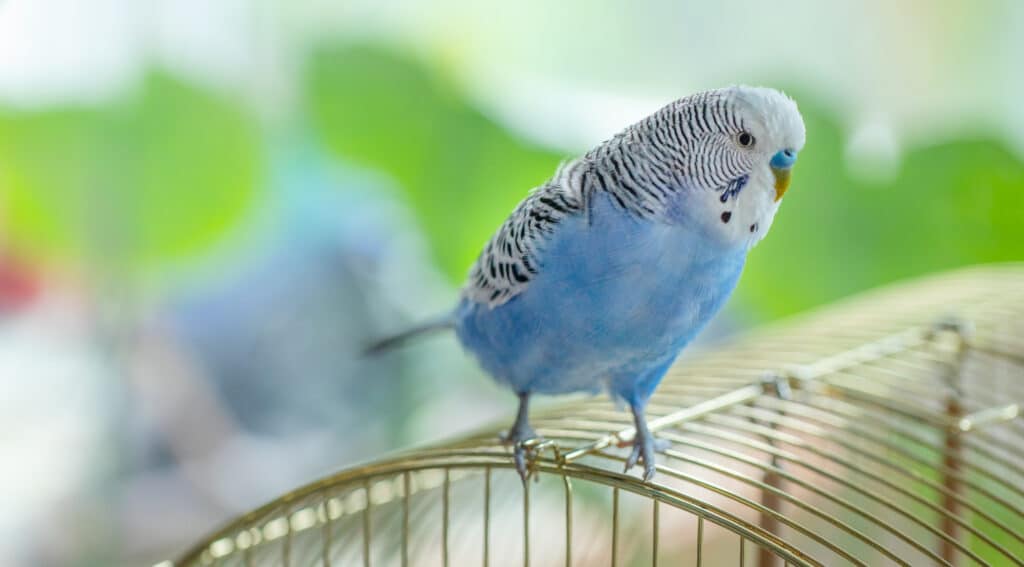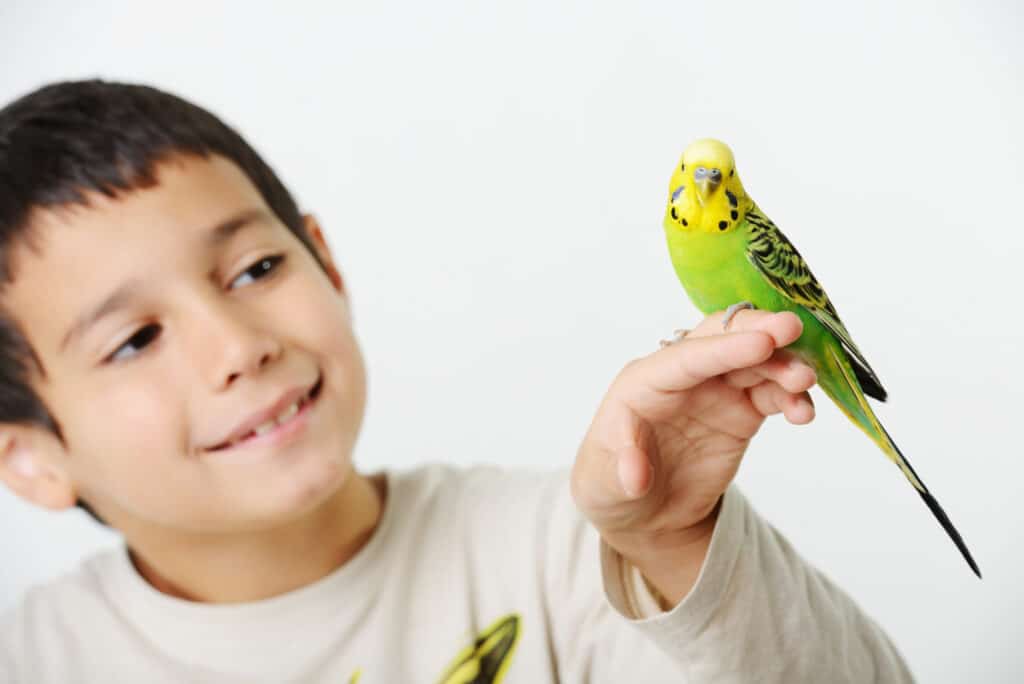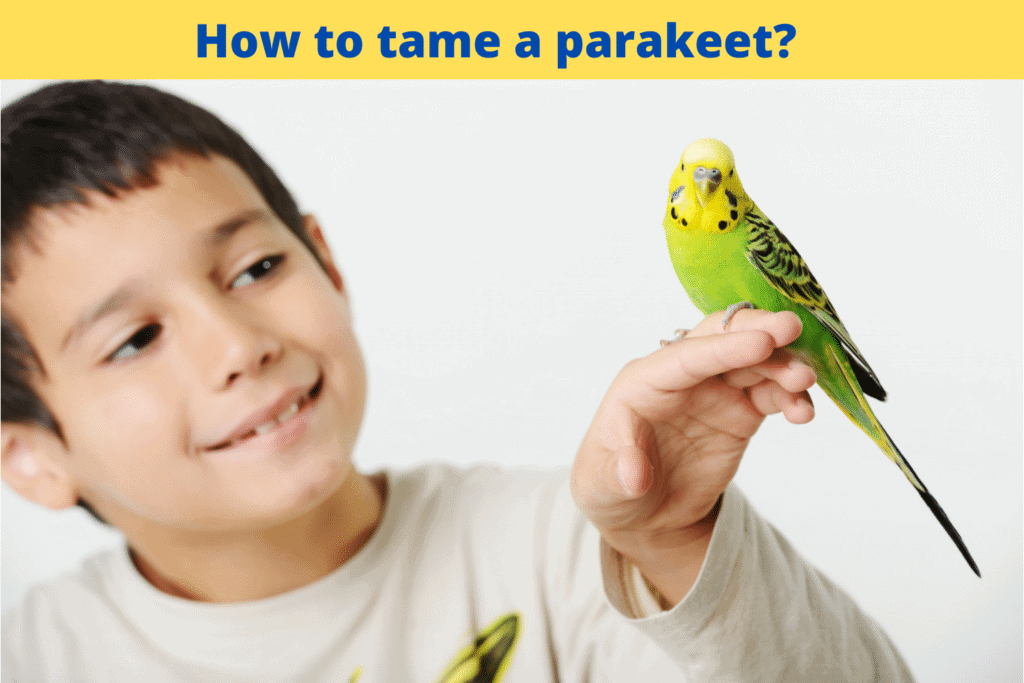Parakeets are popular pets across the US, and it’s no surprise why. Parakeets/budgies are affectionate and intelligent small-sized parrots that have relatively long tail feathers. These slender birds’ family has approximately 115 species that fall under the category “parakeet.”
Many people love owning parakeets because they make excellent family pets, thrive well in small living spaces such as apartments,
make less noise than other bird species, and have low maintenance needs. Owning a parakeet comes with various responsibilities, one of them being taming your parakeet. If you want to have a loving, obedient and playful budgie, here is how to tame a parakeet.
How to tame a Parakeet: A step-by-step procedure
Taming a parakeet is a relatively straightforward procedure, but it can seem exacting to some people. The taming process involves convincing and teaching your parakeet that you don’t pose any threat to it and that interacting/playing with you is fun and beneficial.
Taming your parakeet should ideally begin when at an early age. So long as the parakeet is 8-16 weeks of age, you can start the taming and training process. Clipping your parakeet’s wings before starting taming can help restrict its movement during the entire process. Here is the step-by-step procedure of taming this affectionate pet bird.
1. Begin by introducing the parakeet to its cage
Before you initiate any taming, it would be best if you ensured your baby parakeet is comfortable with its living conditions. A newly bought parakeet needs to stay locked in its cage for 2-3 days to allow it to settle in and adapt to its new home environment.
Give your parakeet space and time to eat, drink, explore within its cage, and play with its toys before initiating any interaction. You can start offering the bird some spray millet during this stage and attempt to talk to it using a low, sweet voice tone. This way, your parakeet can slowly become accustomed to your presence.
Additionally, you can speed up this taming by sitting near your parakeet’s cage. You can achieve this by placing a chair near the cage and routinely walking over and sitting on it. You can sit near your parakeet for 10-15 minutes without interacting with it and then continue with your day-to-day activities.
At first, your parakeet may become startled when you sit near it, but with time it will stop leaping off its perch in an attempt to escape your presence. As you slowly earn your parakeet’s trust, you can begin moving the chair closer to its cage until you can sit directly in front of the birdcage without the parakeet going into a wild/frenzied state.
2. Open the cage and begin interacting with your parakeet
Once the parakeet becomes accustomed to your presence, you now enter its domain (birdcage). You can achieve this taming step by sitting next to the birdcage, slowly opening it, and placing your hand inside. Your parakeet probably won’t appreciate your presence in its cage during the first few attempts and may react unfavorably.

Repeated attempts to place your hand in the birdcage can slowly help build an understanding between you and the bird. With time you can start moving your hand towards the parakeet and repeat this process until the bird is comfortable with your hand being near it.
The next step involves you holing out some food to your parakeet, and with some patience, it should begin nibbling the food on your palm. Once you achieve this taming step, you can move to touching and physically interacting with the bird.
It would be best to begin touching your parakeet when it’s feeding on out of your palm. Slowly reach over and gently stroke the bird. In a parakeet, you can “hit the spot” by stroking the back of its neck, and once you tame your parakeet, it will willingly tilt its head forward to allow you to stroke/tickle it.
3. Start picking up your parakeet and begin hand training
By the time you reach this stage, your parakeet will trust you enough to open its cage, feed it and touch it. The next step involves you picking up the budgie and teaching it to stay on your hand. If you wish to begin hand training, here is how to tame a parakeet and ensure it can stay perched on your hand.
● Find an ideal time to start hand training the parakeet, ideally for an uninterrupted 30-40 minutes.
● Approach your parakeet’s cage with a dry hand towel and some treats. Open the birdcage, offer the bird some treats, and use the hand towel to grasp and restrain the parakeet from behind gently. It would be best to be gentle because the parakeet and other birds have hollow bones that don’t like high pressure/ force.
● Take the parakeet to a small open confined area such as a bathtub (ensure you plug the drain). Slowly place your parakeet on your index finger under its feet and release the bird from the hand towel. The bird may begin fluttering and fall, and this is normal.
Ensure your finger is at a low elevation so that your parakeet doesn’t get injured if it falls off your finger.
● Repeat this previous taming step and speak softly to your parakeet during the training until it understands that you want it to perch on your finger. Once your parakeet succeeds in perching on your finger, praise it and gently caress it.


4. Start the “Step Up” training
The “Step Up” training teaches your parakeet how to step from one perch/finger to another. This training helps your parakeet to seamlessly hop onto your finger when you’re removing it from its birdcage. Begin the “Step Up” training by placing your parakeet on one finger and gently nudge it to move to the middle finger (which should be at a 60-70o angle).
As you train the bird to move from one finger/ perch to another, it would help if you said, “Step Up, “ to help it understand what you want.
Conclusion:
If you know how to train a parakeet, owning one can be hassle-free. Taming your parakeet involves several steps and repeated training. When your parakeet comprehends this training, don’t forget to praise it and offer some birdseed.



